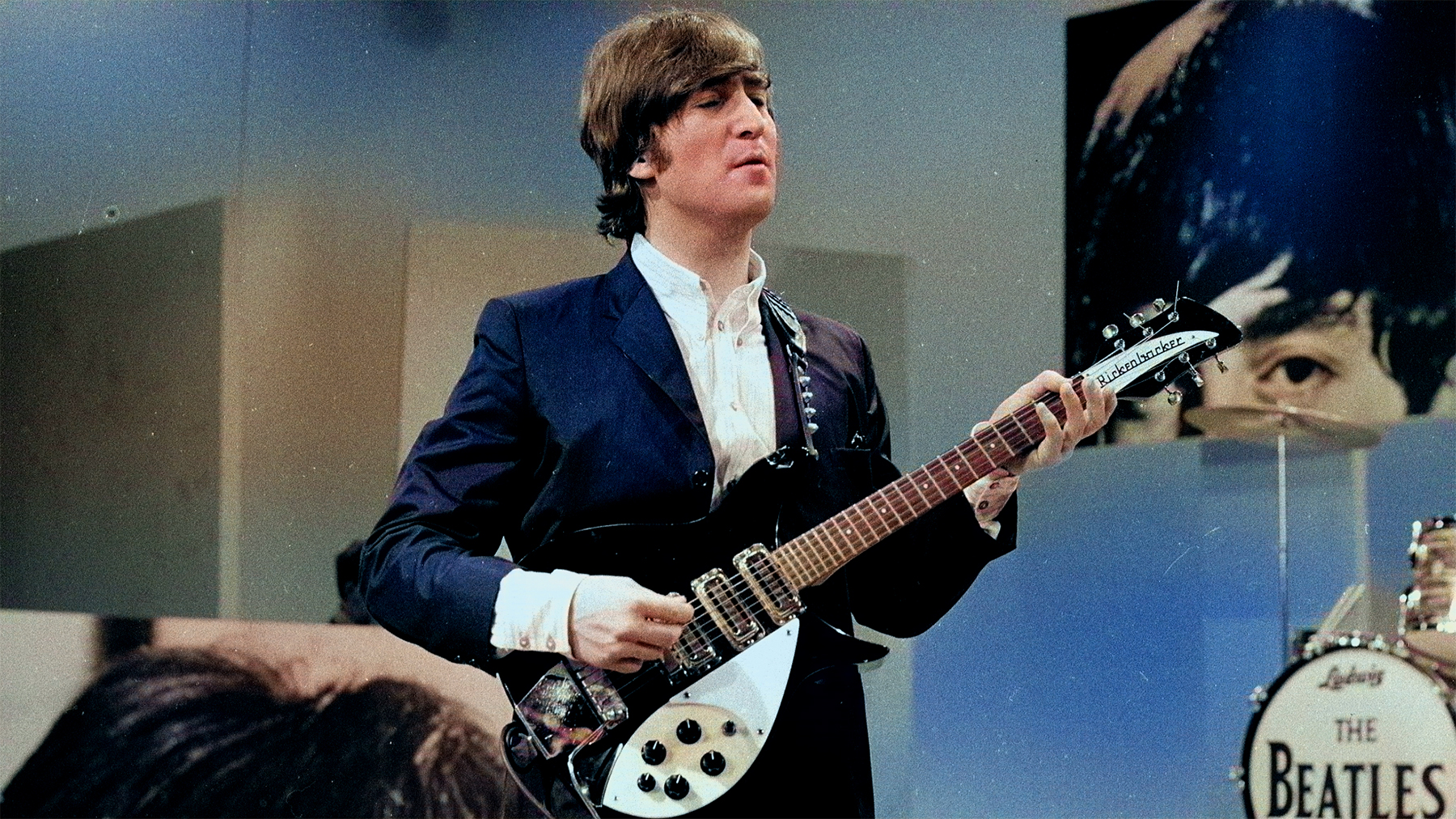“It's this different sound, and it jumbles your mind.” From Taylor Swift to Phoebe Bridgers and Wilco's Jeff Tweedy — how indie rockers came to adopt a guitar bridge born from parts in Home Depot's toilet aisle
Rubber-bridge guitars have changed the sound of acoustic guitar over the past 10 years. And it's all down to one man's invention

The sound of the rubber guitar bridge has become a mainstay in the modern indie-rock scene, courtesy of guitarists like Taylor Swift, Phoebe Bridgers and Wilco's Jeff Tweedy. It turns out the guitar mod has its origins in two unlikely places: the homely banjo and the toilet section of Home Depot.
And it's all thanks to Reuben Cox, who runs Old Style Guitar Shop out of a cabin in Silver Lake, Los Angeles. The independent luthier inadvertently changed the face of indie rock in the early 2000s.
"I was taking photographs of Andrew Bird and Blake Mills at a recording session," he told Acoustic Guitar in 2023. "Blake had this ’50s Harmony banjo that had a kind of muting system... It had this wood and rubber kind of thing. I listened to playback, and it was one of the most exciting things I’d heard in a long time."
Using photos and video of the instrument he received from Mills, Cox began devising a bridge that could get a similar sound from a guitar. Soon he was trawling the shelves of his local Home Depot with a view to replicating the modification on an acoustic guitar.
He eventually found what he was looking for in the toilet aisle. Although what that is, he won't say.
“[It was] very Duchampian,” he tells the LA Times with a smile, referencing French painter and sculptor Marcel Duchamp, who was a significant player in the development of the plastic arts and made his art constructions from common everyday objects that had been discarded.
Rather than add the bridge separately, he built it into the body of a guitar.
All the latest guitar news, interviews, lessons, reviews, deals and more, direct to your inbox!
“I was like, ‘Oh, well, let’s try this and see what happens,’” he reflects. “It ended up being a bull’s-eye.”
Rubber bridges deaden a guitar's strings without completely obliterating its resonance, giving the instrument a folky banjo-style sound. Although Cox's rubber-bridged guitar creations have been in use for years, his design didn't reach its commercial zenith until Taylor Swift used one her 2020 double-Platinum record, Folklore.
Since then, demand for rubber-bridge guitars has exploded. L.A.'s Orangewood Guitars was one of the first manufacturers to bring them to the masses with its purpose-built Juniper acoustic. This came after Cox launched his own conversion kits when demand vastly outgrew his building capacity.
The phenomenon has continued to grow, with Olivia Rodrigo's "Hope Ur Ok," Ariel Posen's "Tumble Away" and Perfume Genius' "Slip Away," three other high-profile employments of Cox's idea.
A post shared by Old Style Guitar Shop (@oldstyleguitarshop)
A photo posted by on
Cox has a theory about why his creations have become so sought-after.
“If you’ve been playing guitar for a really long time, your hands go to the same places, and you repeat yourself,” he says. “It’s this different sound, and it jumbles your mind in a way, and everything feels new. For a lot of people, songs would just pop out of it.”
Wilco's Jeff Tweedy told Guitar Player in 2019 how rubber guitar bridges transformed the sound of his inexpensive acoustic guitars on the album Ode to Joy, making them sound “sort of like a ukulele and classical guitar.”
“They’re terrible old ’40s stencil cowboy guitars or cheapo beginner guitars, but you put a rubberized bridge on them and they have this crazy quality that just leaves so much more room for my voice. I don’t have a real sustaining voice so I tend to like guitars that aren’t showing me up.”
Tweedy — who says he’s bought “at least” a dozen of Cox’s guitars over the years — isn’t alone in his love for the sound. The muted quality has become a huge inspiration point for singer-songwriter types, as it lends itself to intimate, storytelling songs.
Now, of course, Cox's invention is earning a payday for other makers. The 53-year-old luthier tells the LA Times that he considered filing a lawsuit against Orangewood. But as a small business owner, he says it would strain his time and finances.
He's also aware the originality of his design could be questioned. Muting devices on guitars go back decades. Even George Harrison's Gretsch Country Gentleman, which he played on the Beatles’ Ed Sullivan appearance in 1964, featured a muting device.
Instead, Cox has comforted himself with the knowledge that he will go down in history as the man behind one of the 21st century’s biggest guitar trends., even if others have found a way to profit from his experiments.
In the meantime, he hopes to “stumble across a new trick,” to build on his legacy. He has an uphill battle — the rubber bridge phenomenon is akin to catching lightning in a bottle. But who says lightning can't strike the same place twice?
A freelance writer with a penchant for music that gets weird, Phil is a regular contributor to Prog, Guitar World, and Total Guitar magazines and is especially keen on shining a light on unknown artists. Outside of the journalism realm, you can find him writing angular riffs in progressive metal band, Prognosis, in which he slings an 8-string Strandberg Boden Original, churning that low string through a variety of tunings. He's also a published author and is currently penning his debut novel which chucks fantasy, mythology and humanity into a great big melting pot.


